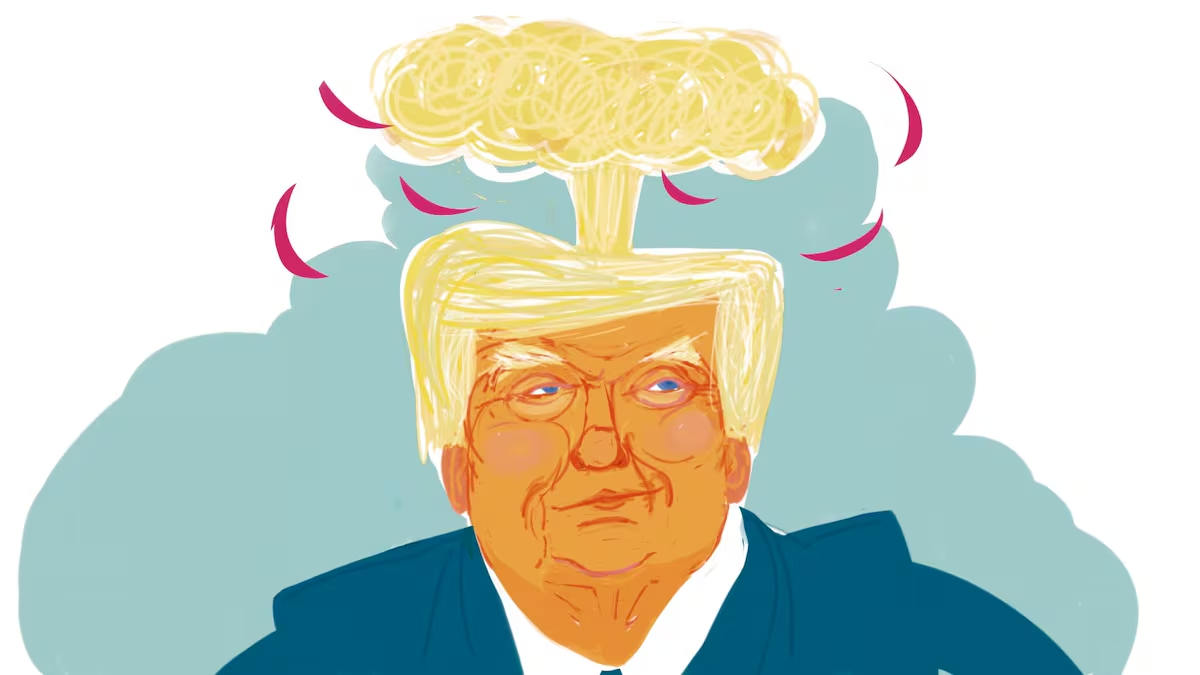
Of all the existential threats to humanity, the proliferation of nuclear weapons is the most obvious since 1949, when the Soviet Union conducted its first nuclear test, ending the American monopoly and already beginning an open bipolar conflict. It is therefore wise to be very precise on this issue and avoid statements that could be misinterpreted by any of the nine existing nuclear-weapon states. This warning once again appears not to be on Donald Trump’s agenda, given that he made two mistakes on October 30th and went on a vaguely worded rant with dire portents.
On the other hand, he claimed that the United States has more nuclear weapons than Russia, although the exact number is unknown, although the exact opposite order is well known (more than 5,000 warheads in both cases, about 92% of all warheads on the planet). To this, he added that he had ordered the War Department to resume nuclear tests because other countries had already done so, with a subtle reference to Russia and China, with the Department of Energy in charge of that task and North Korea being the only country to have conducted nuclear explosions (six times) this century (India and Pakistan tested in 1998, China and France in 1996, and Israel in 1979). In reality, what President Vladimir Putin has done is limited to announcing the successful use of new launch vectors with the potential to carry nuclear warheads, in particular the 9M730 Burevestnik intercontinental cruise missile (SSC-X-9 Skyfall in NATO terminology) and the Status 6 Poseidon underwater drone (Kanyon in NATO slang). The two weapons were already announced by the Russian president in 2018, and as far as is known, the current launches did not carry nuclear warheads, and there is no news about conducting nuclear tests, which the Russian government has not conducted since 1990.
Of course, the launch of these nuclear weapons, which could theoretically penetrate any anti-missile shield, is alarming in and of itself. Because it demonstrates its will to continue perfecting its ability to attack any potential enemy with unimaginable destructive capabilities. However, one cannot confuse what the United States itself is doing within the framework of the seven nuclear modernization programs approved under Barack Obama (for example, the B61-13 bomb) with nuclear tests, which the United States has not conducted since 1992. So when we realize that Trump’s words are literal and that he definitely despises his own nuclear tests when new nuclear tests (be it underground or atmospheric) are recorded, anxiety immediately increases. It was signed in 1996 within the framework of the Comprehensive Nuclear-Test Ban Treaty (CTBT), but has not been ratified. President Putin wants to understand this in principle, and he has already revoked the CTBT ratification, which he carried out in 2000, in 2023, warning that in that case Moscow would also act accordingly.
The height of the nonsense in President Trump’s announcement is that if it were ultimately translated into reality, the United States would not need to conduct another nuclear test. Already more than 1,000 shots have been fired, but Russia has 715 and China only 45. For some time, the technology accumulated in this field has made it possible for the nine nuclear-weapon states to ensure the operability of their weapons and even develop new weapons without resorting to large-scale testing. For them (and they do) it is enough to carry out laboratory experiments at subcritical levels. before a chain reaction occurs. In other words, this means that if Trump were to take the step of carrying out another nuclear detonation, we would be faced with a destabilizing political gamble rather than a gesture born of technical necessity. It’s a gamble that automatically furthers the arms race with Russia, China, and North Korea, which are all interested in joining the trend in the first place. Not only would this be a step that would increase international tensions, but it would also represent a mistake on Washington’s part and open the door for potential rivals to take steps to overcome the disadvantages they currently have in the field due to their lack of experience in mock trials.
In this way, the CTBT will be decisively reduced to a formality, marking another step in undermining the framework already established during the Cold War to prevent the proliferation of nuclear weapons. Already in June 2002, the United States decided to withdraw from the ABM Treaty on Anti-Ballistic Missiles, eliminating a fundamental part that would have prevented the two superpowers from racing to accumulate tens of thousands of nuclear warheads in an effort to saturate their rival’s defenses and provide nuclear deterrence. As a result, the U.S. government has stepped up efforts to provide an anti-missile shield, culminating in President Trump’s announcement last May to build a supposedly impenetrable Golden Dome. No wonder this is one of the factors that drove Russia to develop a weapon that is supposedly undetectable and capable of penetrating any defense system.
In addition, in August 2019, the United States (soon after Russia) withdrew from the Intermediate-Range Nuclear Forces Treaty (INF), again opening the door for both countries to once again deploy nuclear missiles with a range of 500 to 5,500 km on European territory. And we must not forget that the extension of START III (or New START), which the United States and Russia agreed to last year, will expire in February next year. This will limit the number of strategic nuclear warheads that both countries can maintain to 1,550 and the launch vector to 800. Unless an extension or new agreement is reached, the outlook becomes even more ominous. To complicate things a little more, President Trump has insisted that China also needs to participate in the nuclear arms reduction process, but Beijing flatly rejects this on the grounds that its arsenal is far inferior to that of Moscow or Washington and therefore does not feel obligated to participate in any negotiations.
It is not about hiding the temptation for the remaining nuclear-armed states to proliferate. In fact, they are all engrossed in ambitious modernization plans, even dreaming of converting them into combat weapons rather than mere deterrents as they have been. But so far this century, it is clear that Washington is most interested in destroying the systems designed to prevent proliferation, both vertically (the five nuclear states recognized in the Nuclear Non-Proliferation Treaty – the United States, Russia, China, France and the United Kingdom – are obligated to reduce their arsenals) and horizontally (as in the case of North Korea, Iran, etc.) and is determined to provide itself with a protective shield that available technology cannot guarantee. method.
Just in case, it’s worth paying attention to the state of Nevada, where the United States’ main nuclear testing facility is located.



